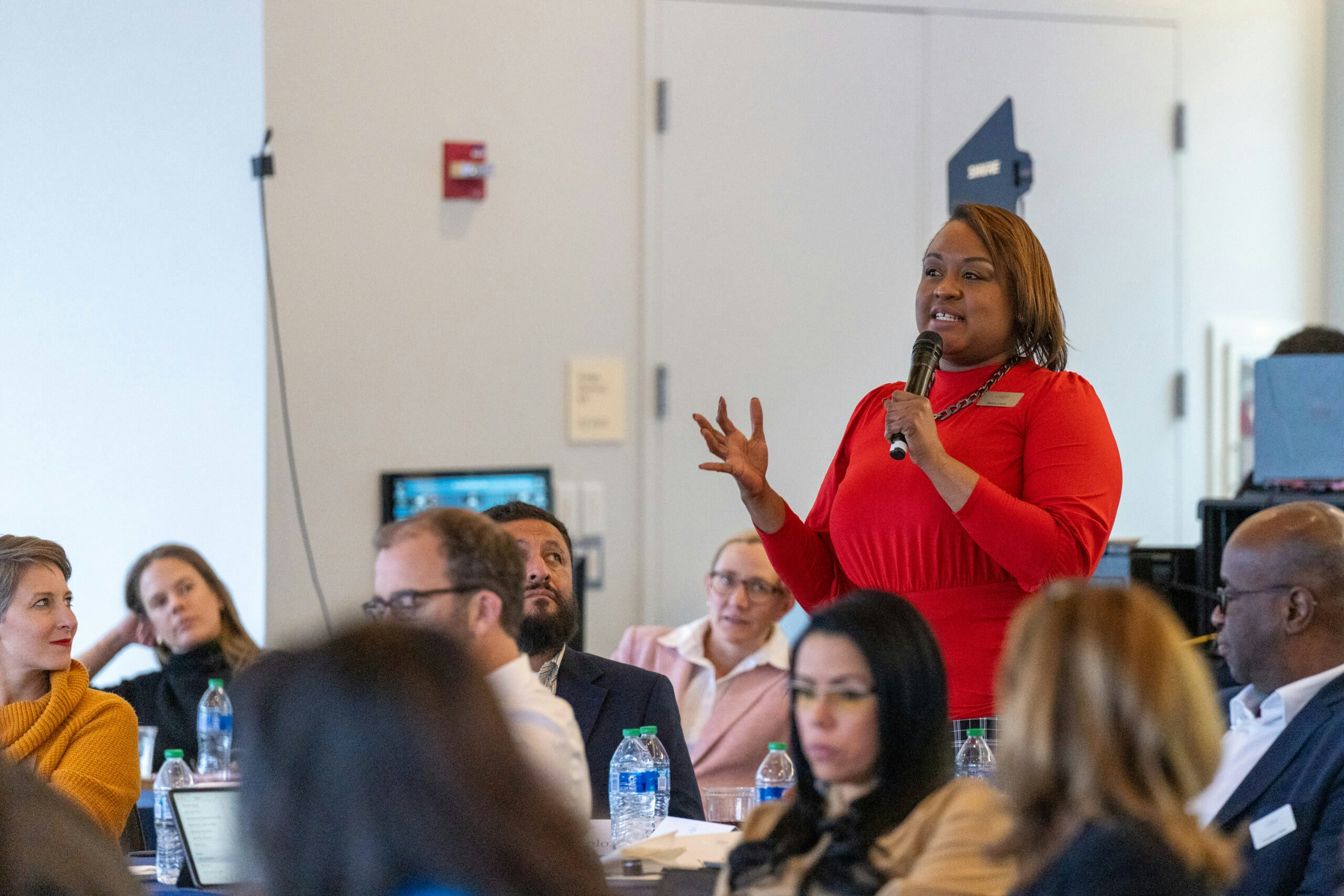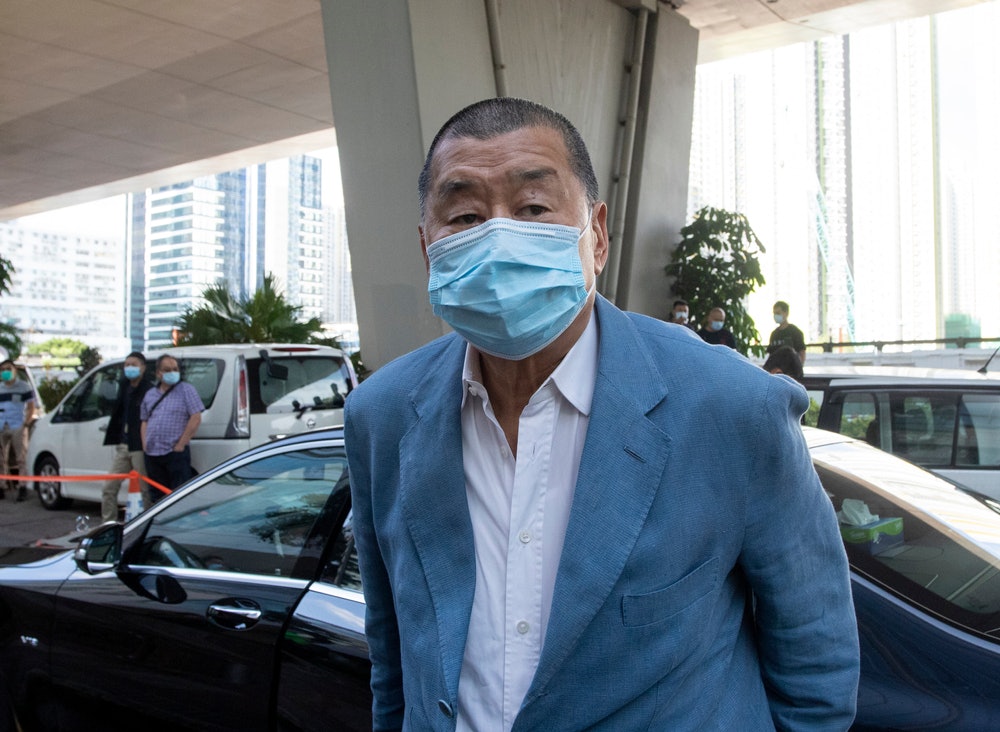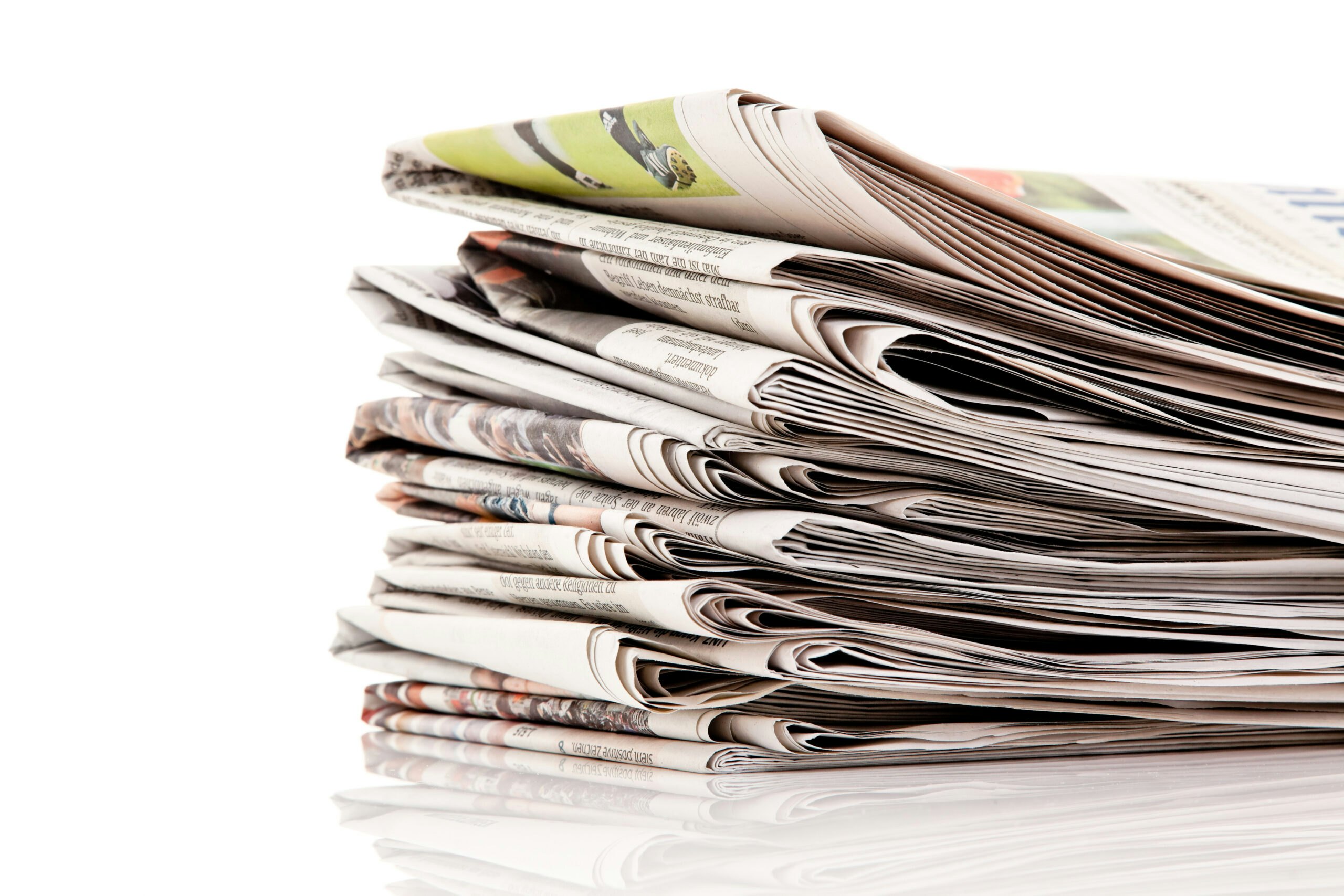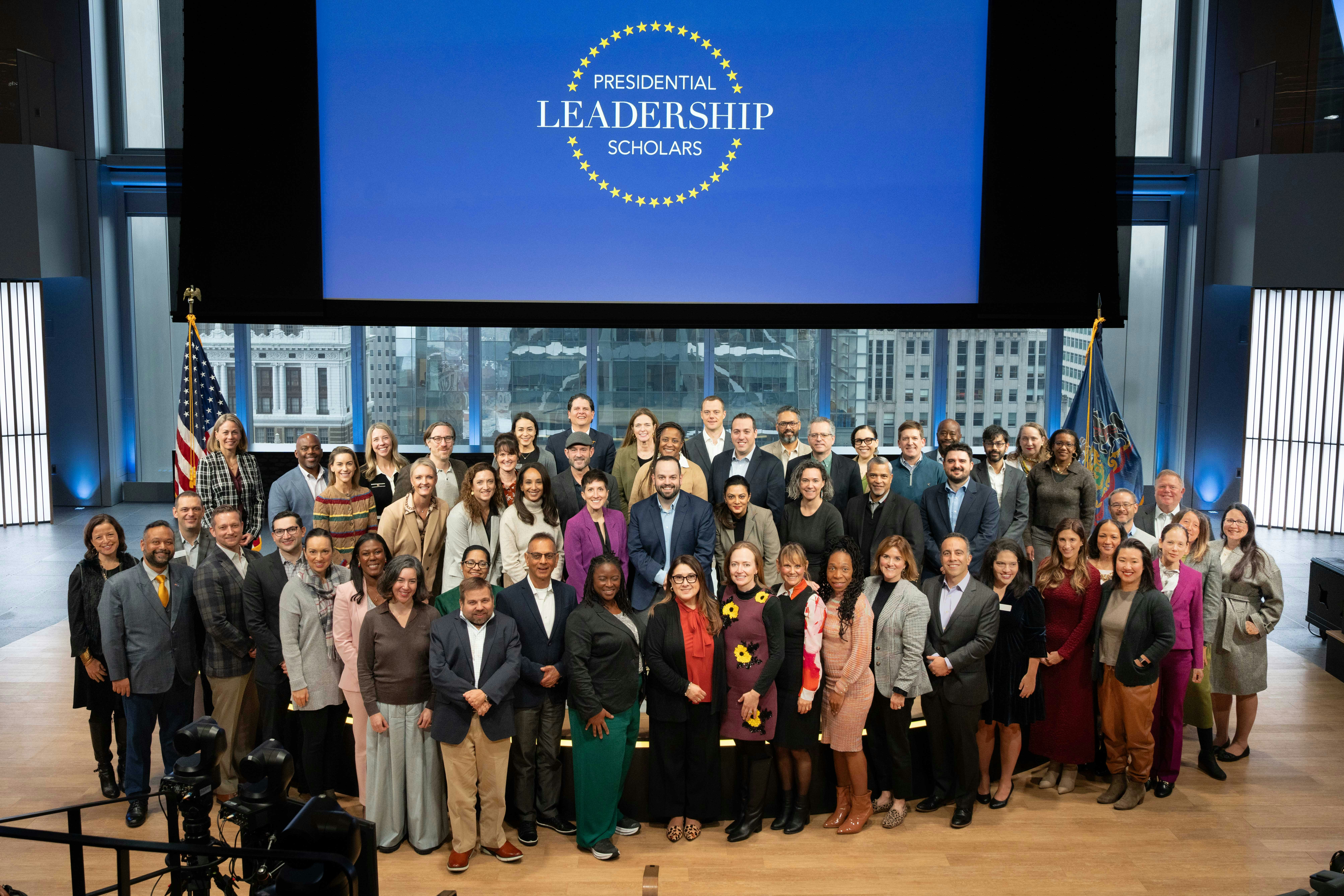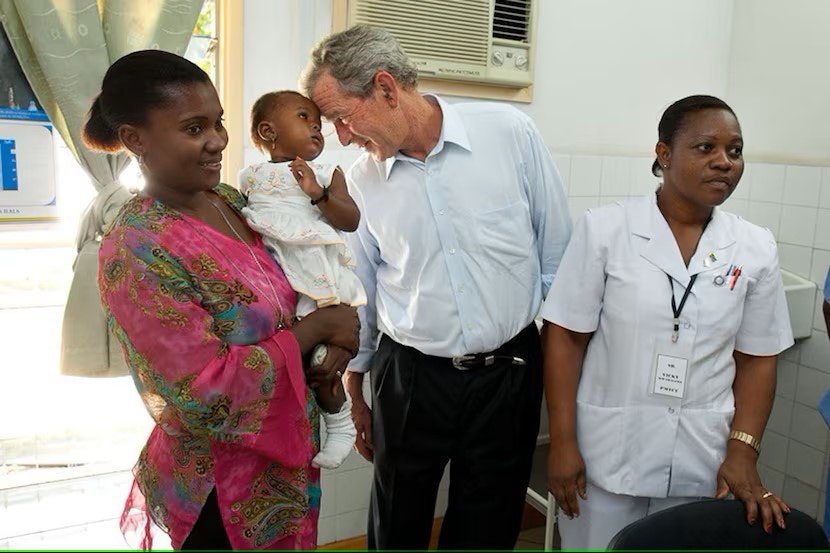Eboo Patel, Founder and President of Interfaith Youth Core (IFYC), details how interfaith collaborations occur – and why they expand religious freedom.
Eboo Patel is Founder and President of Interfaith Youth Core (IFYC), a non-profit organization dedicated to building interfaith leadership in a religiously diverse nation. The author of Sacred Ground, among other books, Patel’s career is dedicated to promoting religious pluralism, where people of all faiths or no faith have room to express their views. The University of Illinois and Oxford University graduate served on President Barack Obama’s Inaugural Faith Council.
Patel spoke about religious pluralism with Lindsay Lloyd, the Bradford M. Freeman Director of the Human Freedom Initiative at the George W. Bush Institute, Chris Walsh, Senior Program Manager in the Human Freedom Initiative, and William McKenzie, Senior Editorial Advisor at the Bush Institute. He contends that hospitals are the best example of respect for religious differences. He also discusses the rise of the Nones, young people who might be spiritually inclined but have no religious affiliation. And he details how interfaith collaborations occur – and why they expand religious freedom.
What is your definition of religious freedom?
I’ll introduce myself as part of this answer. My name is Eboo Patel. I’m an American Muslim. I’m part of the Ismaili Community of Islam, which is a small Shia Community of Islam. I am the Founder and President of an organization called IFYC, or Interfaith Youth Core.
It is the largest organization focused on religious diversity and interfaith cooperation in North America, probably the largest in the Western hemisphere. We have a staff of 50. We have a $10 million budget. We work largely in college campuses. Our vision, our purpose, is to promote and strengthen religious pluralism.
I’ll define religious pluralism and then I’ll speak to religious freedom as a part of religious pluralism. Colloquially put, religious pluralism is the idea that faith is a bridge of cooperation and people from diverse faiths should be coming together in ways that respect each other’s identities, that build relationships between different communities, and that facilitate cooperation on concrete projects for the common good.
That’s the world that we envision. That’s the purpose that we promote: Respect for religious identity, relationships between different communities, cooperation on concrete projects for the common good.
The first of those pillars, respect for religious identity, is intertwined inextricably with religious freedom. In order to respect people’s identities, people need the freedom to express those identities.
Colloquially put, religious pluralism is the idea that faith is a bridge of cooperation and people from diverse faiths should be coming together in ways that respect each other’s identities, that build relationships between different communities, and that facilitate cooperation on concrete projects for the common good.
Catholics have to have the freedom to start Catholic churches. Muslims have to have the freedom to start mosques. Evangelicals ought to have the freedom to preach the gospel, should they want. Jews should have the freedom to host Hanukkah celebrations and not feel a sense of political coercion or civic or social coercion.
The freedom to express identity also suggests something deeper, which is that everybody has a right to their identity. Evangelicals have a right to believe that Jesus is Lord and Savior, son of the living God, and no one comes to the Father except through Him. Muslims have the right to believe that Jesus is a prophet of God and not the son of God and not the savior in the way that evangelicals view Jesus.
The big question that we ask at IFYC is, if Muslims have a right to view Jesus in one way, and evangelicals have a right to view Jesus in another way, how do you build a society where those two groups are not at each other’s throats? Where they have religious freedom, but also civic relationships and social cooperation?
This is best put by the great Jesuit philosopher, John Courtney Murray. The challenge of the pluralist civilization, he says, is to build a political and civic community that brings together diverse identities and divergent views.
In order for that to happen, the underlying political and civic community has to be strong. And we pay a lot of attention to that at IFYC. You can’t just have diverse groups planting their flags and expressing their freedom. You have to have a context in which that happens. You have to have a political and civic community in which diverse identities can express their freedoms, divergent views can be expressed, and people can be in positive relationship. You don’t want a civil war, so freedom is contextualized for us in the larger framework of religious pluralism.
Where do you see these diverse identities and divergent views coming together in a positive way? Is there a local or regional example that you could cite?
Yes, in every hospital in America. Hospitals are the single best example of religious pluralism in action.
First, an awful lot of hospitals have been founded by faith communities. Methodist Hospital in Dallas, right? A particular faith community builds an institution out of its own identity that almost always serves everybody.
I promise you at Methodist Hospital, if a Muslim says, “I am halal,” food will be provided that meets that person’s needs. The leadership of Methodist Hospital doesn’t say, “Actually, we’re Methodist. We’re not going to recognize your religious identity.” When a Jewish baby is born, there are preparations that are made for the rituals that occur at the birth of a Jewish baby. When a Jain dies, preparations are made for a funeral appropriate for Jains. People from different religions perform heart surgeries together and say their own prayers as they’re walking into the operating room.
Hospitals are the single best example of religious pluralism in action.
In America, we do this better in practice than we do in theory. Athletic leagues are another example. A vast majority of YMCAs in America have people from different religious communities teaching swim lessons together, playing basketball together, running summer camps together. We ought to be really proud that we do this.
Michael Walzer, the great political philosopher, points out that in human history people thought that religiously diverse democracies were impossible. They couldn’t happen — until the United States of America. We are the first nation to give rise to the reality of people from diverse religious identities and cooperation.
As David French points out in Divided We Fall, the early European settlers in the United States, mistaken and sinful though they were on many things, cooperated to build a nation. That is not nothing.
My big point is there are many civic situations in which we achieve this quite well. We also have a political philosophy of this. John Courtney Murray, Martin Marty, Diana Eck, Danielle Allen. David French. Eric Liu. John Inazu. In this hyper-polarized moment in American life, we are having a hard time thinking our way collectively into a pluralist civilization. But in many civic spaces, we are already acting our way into this.
This might be a moment to return to the great American philosophy of pragmatism and find the areas in which this is working and lift those up. And it’s working in the vast majority of American hospitals.
Those are terrific examples, and they seem to focus more on laity. Can you talk about where the leaders or the hierarchies of our major faiths have come together for the common good?
That happens with some frequency. The Orthodox Patriarch Bartholomew just received an honorary degree from Notre Dame, which I like to call the American Vatican. My dad went to school there. I’m a big Fighting Irish fan. I say that with high admiration. This is a great example of how on this hallowed Catholic ground, the lead figure of a church that was in schism with the Catholic Church for a thousand years is being honored.
That’s pretty common. I’ve been at a lot of gatherings with the Catholic hierarchy and the Dalai Lama and people like Sheik Hamza Yusuf. That’s important, but I don’t think it’s the most important thing. In part, because it’s already happening. You don’t really have, in Western civilization, leaders from different religions calling on people to go after people who pray differently. With frankly the exception of the far right, we don’t have that very much. It’s not that I don’t think it’s important, it’s just that I don’t think that’s where the problem needs to be solved.
In defining religious freedom, you laid out some doctrinal differences between some faiths. In practical terms, what stands in the way of interfaith collaboration?
It’s not that people are opposed to interfaith collaboration. They just don’t give it high importance. Now, there are great exceptions. My friend Bob Roberts in Dallas-Fort Worth is an important evangelical leader who is leading on interfaith cooperation.
But lots of people don’t make it a top five priority issue. It’s an afternoon coffee issue, not a morning coffee issue. At IFYC, we think it’s a signal priority because that’s where the genius of America’s diverse democracy comes from.
In the city of Mostar in Bosnia and Herzegovina, if there is a fire on the Catholic side of town, the Muslim fire department will not respond to it. If there is a fire in the Muslim side of town, the Catholic fire department will not respond. Pause and reflect on that for a moment. There is a Muslim fire department? What? It would be as if Catholics were turned away from Methodist Hospital in Dallas or Muslims were turned away from Jewish Hospital in Louisville.
We so take for granted in the United States that faith communities build institutions that serve everybody. We forget how special it is in human history. But this is our civic infrastructure. Our civic infrastructure has been built by diverse religious communities who erect institutions out of the inspiration of their own faith that serve everybody.
We so take for granted in the United States that faith communities build institutions that serve everybody. We forget how special it is in human history. But this is our civic infrastructure.
We do that well in the United States at the civic level, so at IFYC, we want to lift up this American genius. This is kind of a Tocquevillian genius. The art of association is the mother science of America. And it runs through other theorists and scholars who think about how you build a diverse democracy and about the role of social capital in a civic infrastructure. What we want to do for a new generation of Americans is to say, “This is special, let’s build on it.”
I’m going to say one more thing: At IFYC, we think of ourselves as writing the chapter after Judeo-Christian America. The term, Judeo-Christian, was not written on Plymouth Rock when the Pilgrims arrived. It was not scrawled in the earth when the pioneers moved west.
The term Judeo-Christian was a civic invention in the 1930s of an organization called the National Conference of Christians and Jews (NCCJ). And it was a response to the idea that America was only a Protestant nation, and that Jews and Catholics were here under sufferance.
As a response to that bigotry perpetrated by the KKK and others in the 1920s, the NCCJ emerges as a civic organization that says, “We’re a Judeo-Christian country.” They invent a word. And they say that Jews and Catholics are not here under sufferance. They’re equal citizens and they’re equal contributors. The term Judeo-Christian becomes so ingrained in the American mind, that we forget that it was an invention.
Now, we live in a nation in which there are as many Muslims as members of the Evangelical Lutheran Church in America and twice as many Muslims as Episcopalians. And guess what? The average age of ELCA members and Episcopalians is in the mid-50s. And what do you think the average age of Muslims and Buddhists are? Mid-30s.
We’re not a Judeo-Christian nation anymore. We’re an interfaith nation. It is time to embrace that. It is time to have a framework that fully welcomes the contributions of people from the world’s great religions from atheism to Zoroastrianism. Part of what’s wonderful about America is that our national story changes to match our national demographics. And it’s time for another change.
This is not a challenge to the old order. This is a continuation of the American story.
Let’s move this discussion from the local level to the national level. How do our political leaders make policy that tries to best respect people of all faiths? At the least, send a message that everyone is included?
Things like the public friendship between George W. Bush and Michelle Obama are important. Those kinds of things can become the framework through which we see the national narrative.
The framework through which we now see the national narrative is one of ugliness, division, and polarization, but it is only one part of the reality. I’m just hoping for the lead story to change. I don’t know how it happens.
I’m an Obama guy, right? The talk that launched him on the national stage of the Democratic National Convention in 2004, he had given dozens of times at South Side Chicago church basements. The time was just right in 2004 for it to be a national framework.
And when the presidential transition happened, President-elect Obama and the outgoing president, George W. Bush, were entirely cordial about it. Learnings were transferred. It was not only amicable, it was the idea that in America we have differences of political views, and we have really deep civic strengths, and we’re going to emphasize our civic strengths, and we’re going to be civil about our political differences.
I think back to John Courtney Murray, you have to have a strong enough political and civic community that can hold together diverse identities and divergent views.
You do the work and wait for the national moment to change. And some small thing can make the moment change. My hope is organizations like IFYC, and institutes like yours, do the work and then one day the sun comes out and our work is what people think of as representative of national life in America. I hope it happens sooner rather than later.
Let me ask you about the rise of the Nones, who identify as being perhaps spiritual, but have no religious affiliation. What impact do you think that phenomenon may have on the concept of religious liberty?
At IFYC, we have a lot of quote unquote Nones. Of course, within the category of Nones, there are lots of dispositions. I don’t know what’s going to happen when it comes to religious freedom. But I will tell you something that I’m greatly concerned about, and that is what’s going to happen to the civic infrastructure that religious communities have built? Southern Baptists train more disaster relief volunteers than the Red Cross. And you’ve got to go to a church to get trained, right?
There are diverse belief systems within the Nones. The thing they have in common is they have not joined a religious institution. And it is out of our religious institutions that America’s civic infrastructure has been built. The hospitals, the universities, the social service agencies. That concerns me. I don’t know what replaces that.
Methodist Hospital. Notre Dame University. Southern Baptist Disaster Relief work. The Inner-City Muslim Action Network. These are models of diverse democracy because people express their identity in an institution that is dedicated to the flourishing of all.
What do you see as the connection between religious freedom and democratic stability? Can you have one without the other?
Other people think about that for a living, but the way that I would put it is religious pluralism is essential to democratic stability. Religious freedom is a pillar of religious pluralism.








